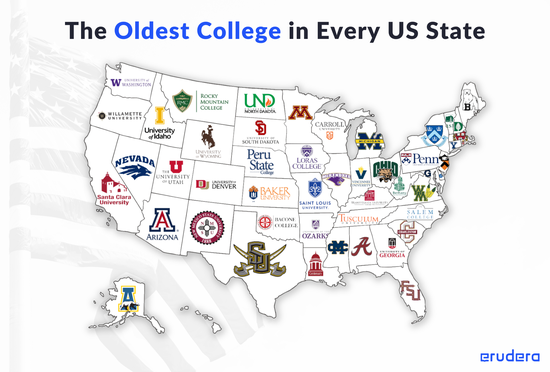More people than ever in the history of humanity are getting an education, with a significant increase in the number of people from the Countries part of the Organisation for Economic Cooperation and Development (OECD) getting a higher education degree in the last 30 years.
Data revealed by the OECD in its most recent report on tertiary education, published this October 3, show that between 2000 and 2021, the share of 25–34-year-olds with tertiary education has increased by 20 percentage points, from 27 per cent to 48 per cent.
At the same time, the share of women with tertiary education has also increased, with women studying at this level more than men, Erudera.com reports.
“Among 25-34 year-olds, the average share of women with tertiary attainment is 53 per cent, 12 percentage points higher than the share for men (41 per cent),” the report reads.
However, something that has changed very little in these past years is the list of countries with the most educated populations.
World’s Top 10 Countries With the Most Educated Population
According to the 2022 OECD report on tertiary education, the world’s top ten countries with the most educated population and their share of citizens with higher education are as follows:
- Canada - 59.96 per cent
- Japan - 52.68 per cent
- Luxembourg 51.31 per cent
- South Korea - 50.71 per cent
- Israel - 50.12 per cent
- The United States - 50.06 per cent
- Ireland - 49.94 per cent
- The United Kingdom - 49.39 per cent
- Australia - 49.34 per cent
- Finland - 47.87 per cent
Each of these countries have a higher share of the population with a higher tertiary degree than the OECD average, which stands at 39 per cent. Other countries above the OECD average are also Switzerland, Norway, Sweden, Lithuania, Netherlands, Belgium, Estonia, Iceland, New Zealand, France, Spain, and Denmark.
Erudera.com, the world’s first education search platform backed by Artificial Intelligence, has conducted research on the main characteristics that these countries have in common, resulting in some quite interesting findings.
Commenting on the findings, Gent Ukehajdaraj from Erudera points out that the factors that keep these countries at the top of the table when it comes to the level of education amongst their citizens are quite a few.
“These are all wealthy countries with stable and thriving economies, which invest a great deal in education, have high per capita GDP, and score well at the happiness index,” Ukehajdaraj says, adding that these countries “are home to some of the world’s best universities like Stanford, Oxford, and have very low unemployment rates.”
He also highlights that higher education rates amongst the population of a country improve the quality of life for those people, in particular for those with bachelors or equivalent degrees and higher.
“Data show that the more educated the people of a country are, the more developed that country is economically. As a result, the quality of life in that country is also better,” Ukehajdaraj points out.
He also notes that the results have pointed out that the better educated the population of a country is, they also score higher in other aspects such as psychological well-being, health, arts and culture, environment, and work.
Following, Erudera.com has listed and elaborated on the most important finding of its research on what the world’s most educated countries have in common.
They Have a High Per Capita GDP & Low Unemployment Rates
As Ukehajdaraj says, Canada, Japan, Luxembourg, South Korea, Israel, the United States, Ireland, the United Kingdom, Australia, and Finland are amongst the world’s wealthiest countries, with their per capita GDP varying between $40,000 to $80,000.
The country with the highest per capita GDP in this group is Luxembourg ($115,873.60), followed by Ireland ($83,812.80), and the third is listed Austria, with a per capita GDP of $51,812.15. The other countries are listed as follows, from the highest to the lowest GDP:
- The United States - $63,543.58
- Finland - $49,041.34
- Israel - $43,610.52
- Canada - $43,241.62
- The United Kingdom - $40,284.64
- Japan - $40,048.93
- South Korea - $31,489.12
According to a research analysis by Associate Professor of Economics at Georgia Institute of Technology and PhD Heming Wang titled “Relationship between higher education level and GDP per capita of different American States,” the more holders of bachelor’s degrees a state has, the higher its GDP is.
“This study shows that higher education level is vital to the growth of a state’s GDP per capita, which has many implications. It also means that pursuing higher education does seem to improve people’s quality of life,” the two researchers write in the conclusions of their paper.
Whereas another report named “Education, Income, and Wealth”, written by PhD, Senior Economic Education Specialist Scott A. Wolla and Economic Education Intern Jessica Sullivan and published on the website of the Economic Research Federal Reserve Bank of St. Louis, has found that in general, those with more education earn higher incomes.
The same also points out that workers with more education have a lower average unemployment rate than those with less education.
Data collected by Erudera show that, indeed, the countries that have the highest number of citizens with tertiary education also have lower unemployment rates.
While statistics show that there are world countries that have an unemployment rate as high as 34 per cent, the top ten countries with the most educated population have an unemployment rate between 2.5 and 6.7 per cent.
The country with the highest unemployment rate, at 6.7 per cent, in this group, is Finland, followed by Ireland with 6.6 per cent, Canada with 5.4 per cent, Israel with 5.05 per cent, Luxembourg with 4.6 per cent, the United States with 3.7 per cent, the United Kingdom with 3.6 per cent, Australia with 3.5 per cent, Japan with 2.6 per cent, and South Korea with 2.5 per cent.
They Invest a Great Deal in Higher Education
Research by Erudera has revealed that the countries with the highest share of students with tertiary education invest a lot of money in education, in particular in higher education.
A list by OECD on the amount invested by each world country per student in higher education shows that Luxembourg sits at the top as it invests $47,694 per student, followed by the United States with $34,036, the United Kingdom with $29,911, Canada with $24,498, Australia with $20,647, Japan with $19,309, Finland with $18,170, Ireland with $17,125, Israel with $12,336, and the in the last place is South Korea, investing $11,290 per student in higher education.
While there’s quite a difference between these countries, in particular between the first and the last, all of them invest in higher education multiple times more than other world countries. For example, EU member Greece invests as little as €3,503 per student in higher education.
According to a 2017 report by the World Bank Group, higher education is central to creating a knowledge economy, and it is critical for economic development in general.
“High levels of education are assumed to help step on the ladder of increased productivity and growth, and hence help individuals participate in economic growth. This has resulted in a growing demand for and support to higher education,” the report reads.
WBG also notes that over the previous decade before the publication of the report, the same has invested nearly $13 billion in supporting the higher education sector. Of this, $721.8 million was committed by International Finance Corporation (IF), the Bank Group’s private sector lending arm.
“Higher Education & Health System Go Hand in Hand”
Commenting on Erudera’s findings, Ukehajdaraj says that it is not surprising that all of the countries with the most educated population also have very good health systems.
“The better a health system of a country is, the more its citizens are likely to value their health. And people who value their health usually value education more, as they understand the relation between these two. An uneducated nation will always lack good health practitioners, and as a result, its healthcare will always be doomed to fail,” he says.
CEOWorld Magazine’s Health Care Index, which is a statistical analysis of the overall quality of the health care system, including health care infrastructure, health care professionals’ competencies, cost quality medicine availability, and government readiness, confirms that.
According to its 2021 edition, South Korea has the best health care system in the world, while Japan is listed fifth, Australia sixth, the UK tenth, and Finland 12th.
“Educated People Are Happy People”
According to the World Happiness Report 2022, the countries listed as the top ten for the most educated population are also countries that rank high in the happiness index, as follows:
- Finland ranks as the first happiest country in the world
- Luxembourg ranks sixth
- Israel - ninth
- Australia - 12th
- Ireland - 13th
- Canada - 15th
- The United States - 16th
- The United Kingdom - 17th
- Japan - 54th
- South Korea - 59th
A survey based on data from the US General Social Surveys shows that 94 per cent of people with a bachelor’s degree or more reported feeling happy or very happy with their lives overall, which means that the more education a person has, the happier the same tends to be.
Whereas a 2016 Pew survey had revealed that adults with less than a high school education are more than twice as likely as those with a bachelor’s degree or more education to claim they are not happy with their lives.
“Having a college degree does not automatically make one happy, but the things related to that degree increase the levels of happiness in a person, since this person has better knowledge of the world around, better chances at employment, make more money and tend to live a healthier life,” Ukehajdaraj claims.
He also notes that research has shown that people with a degree also have a clearer purpose in life, which enables them to live fuller and more quality lives.
What the World’s Most Educated Countries Have in Common
| Share of people with tertiary education | GDP per capita | Happiness level as a score | Expenditure on higher education per student | Unemployment Rate | |
|---|---|---|---|---|---|
| Canada | 59.96% | 43,241.62 USD (2020) | 7.1 points | $24,498 | 5.4 per cent |
| Japan | 52.68% | 40,048.93 US dollars | 5.9 points | $19,309 | 2.6 per cent |
| Luxembourg | 51.31% | 115,873.60 USD (2020) | 7.3 points | $47,694 | 4.6 per cent |
| South Korea | 50.71% | 31,489.12 USD (2020) | 5.8 points | $11,290 | 2.5 per cent |
| Israel | 50.12% | 43,610.52 USD (2020) | 7.1 points | $12,336 | 5.05 per cent |
| United States | 50.06% | 63,543.58 USD (2020) | 6.9 points | $34,036 | 3.7 per cent |
| Ireland | 49.94% | 83,812.80 USD | 7 points | $17,125 | 6.6 per cent |
| United Kingdom | 49.39 per cent | 40,284.64 USD (2020) | 7 points | $29,911 | 3.6 per cent |
| Australia | 49.34 per cent | 51,812.15 USD (2020) | 7.1 points | $20,647 | 3.5 per cent |
| Finland | 47.87 per cent | 49,041.34 USD (2020) | 7.8 points | $18,170 | 6.7 per cent |
Last Updated: 5 October 2022


